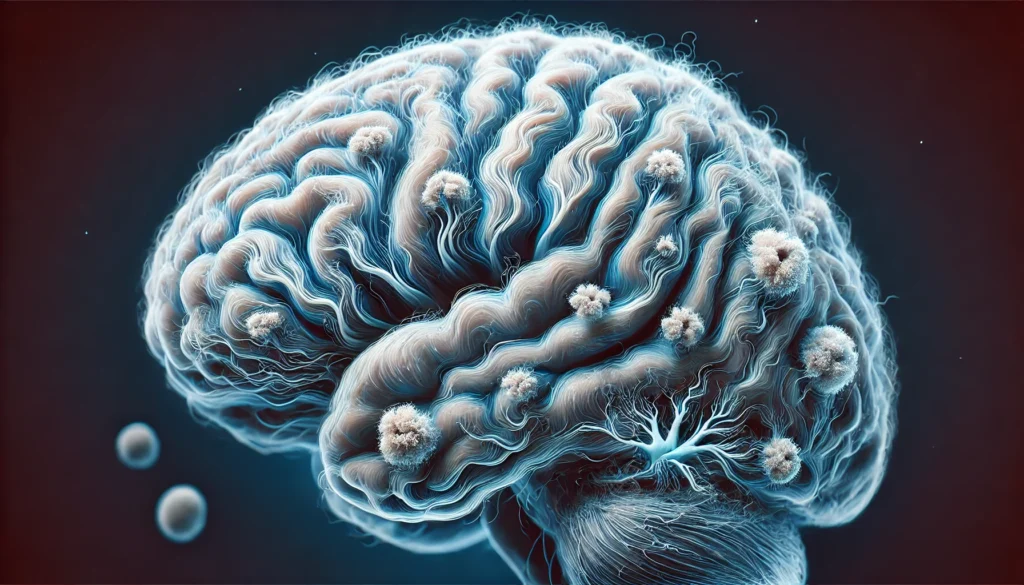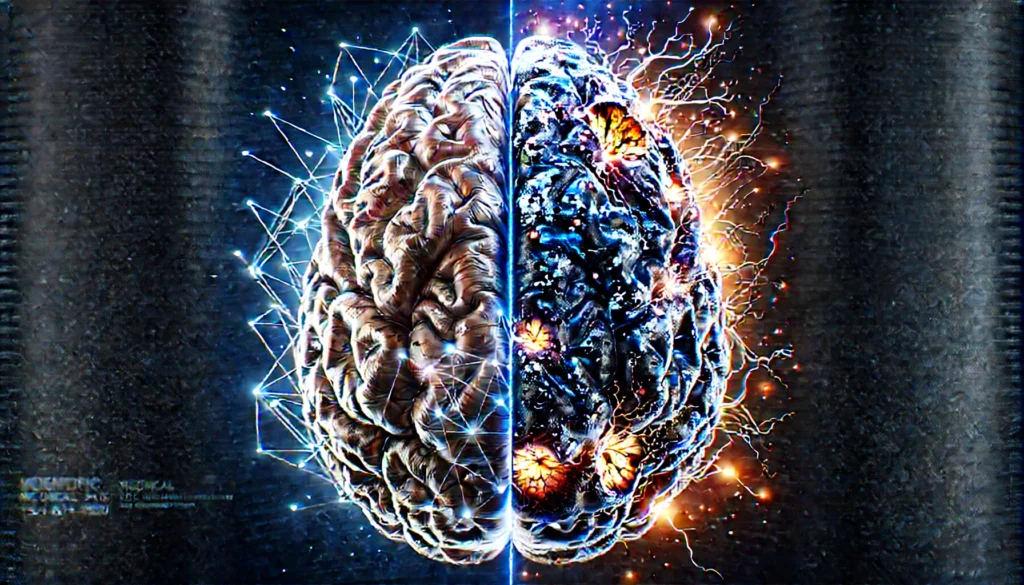Introduction
Alzheimer’s disease is one of the most widely misunderstood and feared medical conditions in the modern world. It is a progressive neurodegenerative disorder that slowly destroys memory, thinking skills, and ultimately the ability to carry out even the simplest tasks. Many people encounter the term in passing, often confused by euphemisms like “old timers disease” or alternative spellings like “altimeters disease” and “alltimers sickness,” but few grasp the full scope of what the Alzheimer disease truly entails. As society ages and cases of cognitive decline increase globally, understanding the early signs, public misconceptions, and long-term effects of Alzheimer’s has never been more critical.
You may also like: How to Stop Cognitive Decline: Science-Backed Steps for Prevention and Brain Longevity
When someone asks, “what is the Alzheimer?” they’re often beginning a personal or family journey into a complex medical landscape. This journey is frequently filled with myths, denial, fear, and misinformation. Alzheimer’s disease does not simply appear overnight. It creeps in subtly, often mistaken for normal aging or everyday forgetfulness. Yet, the early stages hold vital clues—clues that, if recognized, can lead to earlier interventions and improved quality of life for those affected. This article explores Alzheimer’s through a scientific lens while also addressing cultural confusion and public misperceptions. We’ll look at the biological underpinnings, cognitive manifestations, and the widespread misnomers that surround this serious condition, aiming to clarify what Alzheimer’s is, how it starts, and what individuals and families should watch for.

Defining Alzheimer’s Disease in Clinical Terms
Alzheimer’s disease is the most common form of dementia, accounting for approximately 60 to 80 percent of all dementia cases worldwide. Dementia is not a specific disease but an umbrella term for a decline in mental ability severe enough to interfere with daily life. Alzheimer’s is a specific brain disease that causes a slow decline in memory, thinking, and reasoning skills. While people often refer to it as “alzimer disease” or “alzheimers disorder,” the accurate medical term is Alzheimer’s disease, named after Dr. Alois Alzheimer, the German psychiatrist and neurologist who first described it in 1906.
At the core of Alzheimer’s lies abnormal protein accumulation—specifically, beta-amyloid plaques and tau tangles—which gradually interfere with neuron communication and trigger cell death in the brain. These pathological changes usually begin years, sometimes even decades, before the first symptoms appear. As the damage spreads, it begins to affect the hippocampus—the region responsible for memory—and eventually impairs other brain functions.
The clinical diagnosis of Alzheimer’s involves cognitive assessments, neurological exams, and often imaging tools like MRIs or PET scans. Blood tests and spinal fluid biomarkers are also becoming increasingly useful in identifying biochemical markers linked to the disease. Yet despite these technological advances, many people still struggle to answer a basic question: what is the Alzheimer and how is it different from normal aging?

Debunking Misconceptions: The Many Misnomers of Alzheimer’s
Public discourse around Alzheimer’s is filled with confusion, partly due to colloquial misnomers and incorrect terminology. It’s not uncommon to hear someone refer to the disease as “old timers disease” or even “alltimers sickness,” terms that may have originated from phonetic mishearing. These expressions, though widespread, are medically inaccurate and can obscure the serious nature of the condition.
Another common misnomer is “altimeters disease,” which likely stems from confusion with the word “Alzheimer’s.” Similarly, individuals often wonder how to spell Alzheimer’s correctly, especially when researching symptoms or communicating with healthcare providers. The correct spelling is A-L-Z-H-E-I-M-E-R, and the possessive form—Alzheimer’s disease—is most commonly used in both clinical and public literature.
These inaccurate terms may seem harmless, but they can delay diagnosis, complicate communication, and lead to underestimating the seriousness of the disease. When caregivers, patients, or even primary care physicians refer to the condition by its incorrect name, it may interfere with accessing appropriate resources or understanding its trajectory. Public education that directly addresses these variations is essential for improving both awareness and outcomes.
The First Stage of Alzheimer Disease Is Characterized by Subtle Cognitive Changes
One of the most tragic aspects of Alzheimer’s is that it often develops silently, making early detection challenging. The first stage of Alzheimer disease is characterized by very subtle changes in cognition—changes that many people either fail to notice or dismiss as normal aging. These may include occasional lapses in short-term memory, difficulty recalling words, increased reliance on written notes, or getting lost in familiar places.
Medical professionals refer to this phase as Mild Cognitive Impairment (MCI), particularly when memory problems exceed what’s typical for a person’s age but do not yet significantly disrupt daily life. Not everyone with MCI develops Alzheimer’s, but MCI often marks the transition from healthy aging to early Alzheimer’s. This early stage is crucial, as it is where interventions—both lifestyle and medical—can have the greatest impact on slowing progression.
Unlike the dramatic portrayals seen in movies or television, the early effects of Alzheimer disease tend to be subtle. A person might forget recent conversations, misplace items frequently, or repeat questions in a short time span. Family members often notice changes in behavior or personality before the individual does, including increased irritability, withdrawal from social situations, or heightened anxiety.

Recognizing the Signs and Symptoms of Alzheimer Disease
To determine whether cognitive decline is linked to Alzheimer’s, clinicians look for a specific constellation of symptoms. The most common signs and symptoms of Alzheimer disease include memory loss that disrupts daily life, challenges in planning or solving problems, difficulty completing familiar tasks, confusion with time or place, and trouble understanding visual or spatial relationships.
Language difficulties also become apparent. A person might struggle to follow or join a conversation, lose their train of thought, or invent new words to replace forgotten ones. In some cases, individuals begin calling familiar objects by the wrong name or frequently ask the same question without realizing it. These are hallmark indicators of cognitive breakdown tied directly to Alzheimer’s progression.
Another distinguishing feature is impaired judgment. A person in the early stages may show poor decision-making, such as giving away large sums of money to telemarketers or neglecting personal hygiene. Mood and personality shifts also emerge—someone once outgoing may become suspicious, confused, or depressed. These multifaceted changes highlight that Alzheimer’s is not just a memory disorder but a complex disease that alters many aspects of personality and function.
Which of the Following Are the Characteristics of Alzheimer Disease?
Many readers looking to understand this illness often ask some variation of the question, “Which of the following are the characteristics of Alzheimer disease?” This type of query is especially common in academic, clinical, or health quiz settings, but it’s also useful as a starting point for meaningful self-education. Core characteristics of Alzheimer’s include the presence of memory impairment, disorientation, language problems, and difficulty with problem-solving and judgment.
In contrast to normal aging—where an individual may occasionally forget names but remember them later—people with Alzheimer’s often forget names entirely and never recover them. It’s not uncommon for someone with Alzheimer’s to forget the identity of close family members or the layout of their own home. Difficulty managing finances, misplacing objects in illogical places, and wandering are additional telltale signs.
Another distinguishing trait is a lack of awareness about the problem itself. While someone experiencing normal memory loss may recognize they are becoming forgetful, those with Alzheimer’s often do not perceive the severity of their impairment. This phenomenon, known as anosognosia, makes early intervention especially challenging and places a greater burden on caregivers to recognize and respond to changes.
Effects of Alzheimer Disease on the Brain and Body
The effects of Alzheimer disease extend far beyond memory loss. As the disease progresses, it systematically degrades brain regions responsible for planning, organizing, and coordinating motor function. Eventually, even basic tasks like swallowing or walking become difficult. This functional decline is mirrored by physical changes in the brain, including shrinkage (atrophy), disrupted neural networks, and widespread loss of brain cells.
As Alzheimer’s advances into its moderate and severe stages, the individual often requires round-the-clock care. They may become nonverbal, lose control of bodily functions, and develop secondary health problems such as malnutrition, dehydration, and infections due to immobility. The disease can affect sleep-wake cycles, increase susceptibility to falls, and lead to depression or agitation.
Neurologically, Alzheimer’s attacks the brain’s default mode network—a set of regions active during rest and introspection. This includes the medial prefrontal cortex, posterior cingulate, and parts of the temporal lobe. The destruction of these regions contributes to the breakdown of autobiographical memory, self-awareness, and emotional regulation. These changes underscore that Alzheimer’s is a whole-brain disease with far-reaching systemic consequences.

Diagnosing Alzheimer’s: From Questions to Clinical Confirmation
Diagnosis begins with questions like “what is the Alzheimer” and evolves into a multi-step clinical evaluation. Physicians first conduct a detailed medical history and cognitive screening, often using tools like the Mini-Mental State Exam (MMSE) or the Montreal Cognitive Assessment (MoCA). These tests evaluate memory, language, attention, and problem-solving skills.
Imaging tools like MRI or CT scans help rule out other conditions such as stroke or tumors, while PET scans can detect abnormal protein deposits. Spinal fluid biomarkers, including beta-amyloid and tau proteins, are also increasingly used in specialized clinics. While no single test can confirm Alzheimer’s with absolute certainty, a combination of cognitive evaluation, family history, and imaging data leads to a reasonably confident diagnosis.
Early diagnosis is crucial for planning, both medically and personally. It allows patients and families to discuss future care, explore treatment options, and potentially enroll in clinical trials. It also makes room for addressing the psychological impact of the diagnosis and accessing necessary support systems.
Understanding Progression and Timeline
Alzheimer’s is a progressive illness, generally advancing through three main stages: early (mild), middle (moderate), and late (severe). Each stage comes with distinct changes in cognitive and functional ability. The early stage, as noted, is characterized by memory issues and language difficulties. The middle stage often brings increased confusion, behavioral changes, and reduced independence. In the late stage, individuals may lose the ability to speak, walk, or recognize loved ones.
The pace of progression varies significantly from person to person. On average, individuals live four to eight years after diagnosis, though some may live up to 20 years depending on age, health status, and quality of care. Understanding this timeline is essential for caregivers, helping them anticipate future needs and adapt accordingly.
Lifestyle, Prevention, and Emerging Treatments
While there is no cure for Alzheimer’s, emerging research offers hope in the form of lifestyle interventions, early screenings, and medication. Factors such as regular physical activity, cognitive stimulation, a Mediterranean-style diet, and quality sleep are associated with reduced risk. Managing chronic conditions like hypertension and diabetes also appears to lower Alzheimer’s risk.
Medications such as cholinesterase inhibitors (Donepezil, Rivastigmine) and NMDA receptor antagonists (Memantine) are currently used to slow symptom progression. Recently, monoclonal antibodies targeting beta-amyloid, like Aducanumab, have gained attention, though their long-term benefits are still under investigation.
Non-pharmacological therapies—including music therapy, art therapy, and cognitive behavioral approaches—are proving helpful in enhancing quality of life. These treatments offer emotional connection and cognitive engagement, especially in early and moderate stages.
Frequently Asked Questions
1. What is the Alzheimer and how is it different from normal memory loss?
The Alzheimer refers to Alzheimer’s disease, a progressive neurodegenerative condition that causes widespread cognitive decline. Unlike occasional forgetfulness from normal aging, Alzheimer’s leads to persistent memory loss, confusion, and impaired reasoning that interferes with daily life. It is marked by physical brain changes and gets worse over time.
2. What are the key Alzheimer disease symptoms?
The primary Alzheimer disease symptoms include memory loss, confusion about time and place, difficulty with language and conversation, mood changes, poor judgment, and difficulty performing familiar tasks. These symptoms worsen as the disease progresses, leading to complete dependence on caregivers.
3. Why do some people call it old timers disease?
The term “old timers disease” is a misheard version of Alzheimer’s. While commonly used in casual conversation, it is medically inaccurate and can lead to misunderstanding of the condition. Alzheimer’s can affect people under age 65 (early-onset), and it is not a normal part of aging.
4. What is the correct way to spell Alzheimer’s?
Many people struggle with how to spell Alzheimer’s due to its pronunciation. The correct spelling is A-L-Z-H-E-I-M-E-R-’S, named after Dr. Alois Alzheimer. Misspellings like “alzimer disease,” “altimeters disease,” or “alltimers sickness” are incorrect but common.
5. What are the effects of Alzheimer disease on the body?
Beyond memory loss, the effects of Alzheimer disease include difficulty walking, speaking, swallowing, and performing basic functions. It also increases vulnerability to infections, falls, and chronic medical complications as it progresses.
6. Is alzheimers disorder the same as dementia?
Alzheimer’s disorder is a specific type of dementia. While all Alzheimer’s cases are dementia, not all dementia is Alzheimer’s. Other types include vascular dementia, Lewy body dementia, and frontotemporal dementia, each with distinct causes and symptoms.
7. What are the signs and symptoms of Alzheimer disease to look out for?
Early signs and symptoms of Alzheimer disease include forgetting recently learned information, difficulty planning or problem-solving, confusion about dates or locations, and withdrawal from work or social activities. Behavioral changes and impaired judgment may also occur.
8. Which of the following are the characteristics of Alzheimer disease?
The main characteristics include memory impairment, language difficulties, disorientation, behavioral changes, and loss of motor function. These traits distinguish Alzheimer’s from typical age-related decline and help form the basis for clinical diagnosis.
9. How does the first stage of Alzheimer disease typically begin?
The first stage of Alzheimer disease is characterized by mild memory loss, occasional confusion, and subtle personality changes. The person may forget familiar names or tasks and begin showing signs of difficulty in decision-making or abstract thinking.
10. What is alltimers sickness or altimeters disease?
Both “alltimers sickness” and “altimeters disease” are incorrect terms often used mistakenly to refer to Alzheimer’s. These variations arise from mispronunciation or misunderstanding and do not represent recognized medical conditions.

Conclusion
Understanding Alzheimer’s disease requires moving beyond fear, myths, and mispronunciations. From the moment someone asks “what is the Alzheimer,” they’re entering a journey that spans biology, caregiving, and societal awareness. Alzheimer’s is not merely memory loss; it is a progressive, life-altering condition that impacts the individual, their loved ones, and the healthcare system. By recognizing Alzheimer disease symptoms early, learning how the first stage of Alzheimer disease is characterized by specific cognitive and behavioral changes, and debunking misinformation surrounding terms like “old timers disease” or “altimeters disease,” we equip ourselves with knowledge that can lead to more compassionate and effective care.
Science continues to explore new frontiers in Alzheimer’s research, from genetics to immunotherapy, giving hope for better treatments and, one day, prevention. Until then, public understanding—rooted in accurate language and empathetic awareness—remains our most powerful tool. Through early detection, holistic care, and respect for those living with this illness, we can change the narrative around Alzheimer’s from one of hopeless decline to one of dignity, humanity, and proactive support.
Was this article helpful? Don’t let it stop with you. Share it right now with someone who needs to see it—whether it’s a friend, a colleague, or your whole network. And if staying ahead on this topic matters to you, subscribe to this publication for the most up-to-date information. You’ll get the latest insights delivered straight to you—no searching, no missing out.
Further Reading:
Early Signs of Dementia You Should Never Ignore in Parents and Grandparents
Understanding Neurocognitive Problems and the Types of Cognitive Disorders That Affect Brain Health
What to Do If You Think Someone Has Dementia: A Guide for Friends, Spouses, and Caregivers



